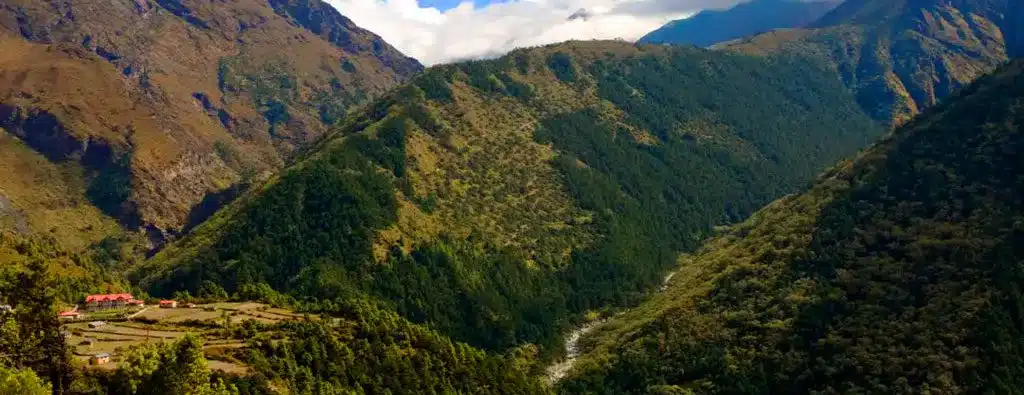Visiting Nepal’s four UNESCO World Heritage Sites is like traveling backwards in time—seeing the birthplace of Lord Buddha, touring the ancient monuments of long-ago dynasties dedicated to Hindu and Buddhist deities, and visiting national parks whose headwaters provide flowing life for so much of a vast region. From intricately carved architectural details to the peak of Everest—Nepal is not short on splendor, as these four sites comprise innumerable marvels.

Lumbini, the Birthplace of the Lord Buddha
Siddhartha Gautama, the Lord Buddha, was born in 623 B.C. in the famous gardens of Lumbini. Among the first pilgrims was the Indian emperor Ashoka, who erected one of his commemorative pillars there. As one of the most holy and significant places for one of the world’s great religions, its preserved archeological remains of Buddhist viharas (monasteries) and stupas (memorial shrines) contain important evidence about the nature of Buddhist pilgrimage.

Kathmandu Valley
The cultural traditions of the multiethnic people who settled in this remote Himalayan valley, referred to as the Newars, is manifested in their unique architecture, which boasts of one of the most highly developed craftsmanship of brick, stone, timber and bronze in the world. Their coexistence and amalgamation of Hinduism and Buddhism with animist rituals and Tantrism is considered unique. Located in the foothills of the Himalayas, the seven Monument Zones of this valley epitomize its essential cultural heritage. Included are the monuments and buildings of the Durbar Squares of Hanuman Dhoka (Kathmandu), Patan and Bhaktapur, the Buddhist stupas of Swayambhu and Bauddhanath and the Hindu temples of Pashupati and Changu Narayan.

Chitwan National Park
The last surviving example of the natural ecosystems of the Terai region, Chitwan spans subtropical lowland, wedged between two east-west river valleys at the base of the Siwalik range of the outer Himalayas. It harbors one of the last populations of single-horned Asiatic rhinoceros, one of very few refuges of the Bengal tiger, and a particularly rich flora and fauna. Established in 1973, the property covers an area of 93,200 hectares recognized as one of the worlds’ biodiversity hotspots and named to WWFs’ 200 Global Eco-regions. The great diversity of species here includes one of the highest concentrations of birds in the world (more than 350 species). This is also the land of the indigenous Tharu community, who have inhabited the area for centuries and are well known for their unique cultural practices.
Sagarmatha National Park
Encompassing 124,400 hectares of dramatic mountains, glaciers, deep valleys and the Great Himalayan Range, Sagarmatha is home to 20 Sherpa villages with more than 6,000 Sherpa residents, people who have inhabited the region for the last four centuries. The Earth’s geological evolution is dramatically embodied by the park’s soaring peaks and just as deeply incised valleys. Mount Everest (8,848 m) towers over glaciers who are the source of fresh water essential to countless species and people downstream. Further, the park’s flora, fauna and rare species such as the snow leopard and the red panda make it absolutely essential to safeguard.

